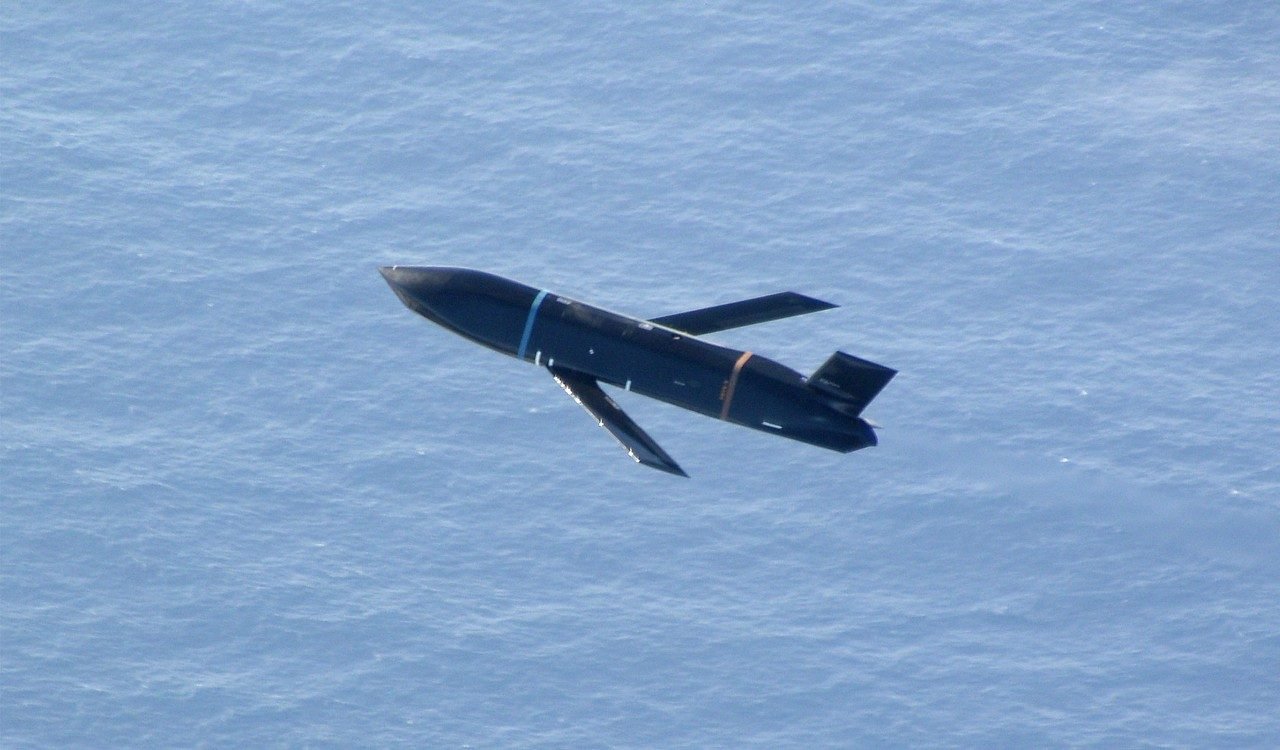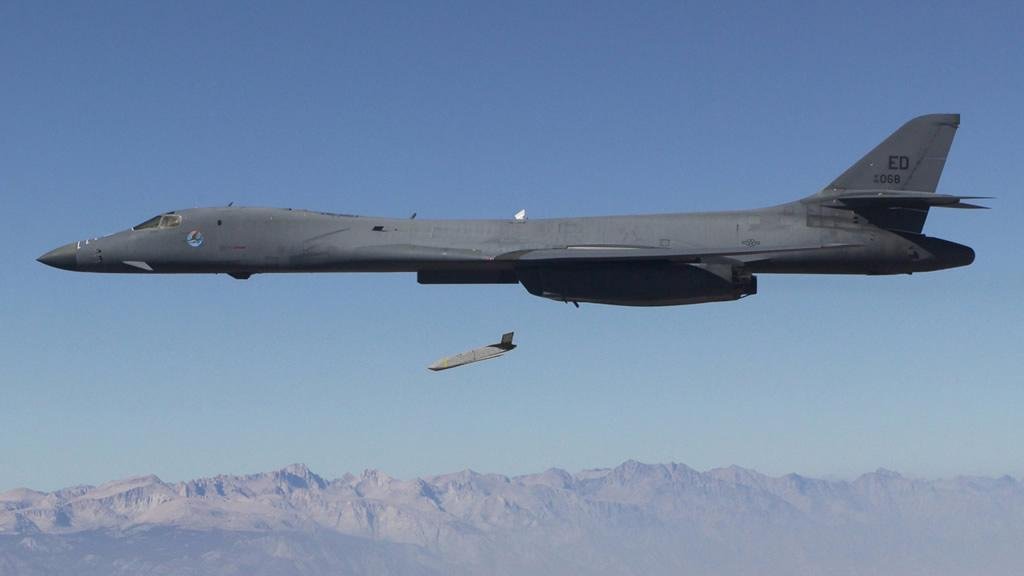The U.S. Navy has completed a successful flight test of its new AGM-158C stealth air launch Long-Range Anti-Ship Missile (LRASM).
The historic test, which involved four missiles in flight simultaneously, was revealed by aerospace and defense company Lockheed Martin earlier this week. The company said the LRASM is currently capable of performance “that no other weapon in the inventory can provide.”
The new weapon was unleashed during the Navy’s 12th Integrated Test Event (ITE-12), allowing a full demonstration of the AGM-158C’s capabilities and “inherent high-end lethality from mission planning through kill chain integration,” the aerospace company said in a press release.


“All mission objectives were met, reinforcing high confidence in the weapon’s capabilities and superior firepower,” the statement added.
Origins of the Navy’s New Long-Range Anti-Ship Missile
The AGM-158C, developed by the Defense Advanced Research Projects Agency (DARPA) for the U.S. Navy and U.S. Air Force, is a stealth air launch anti-ship cruise missile that builds on the capabilities first showcased in Lockheed’s earlier low detection AGM-158 Joint Air-to-Surface Standoff Missile (JASSM), which the Air Force began using in 2009.
In June of that year, DARPA awarded Lockheed a new contract for a two-phase demonstration program and announced in 2013 that it would award a follow-on contract to the aerospace giant for the development of the LRASM. A minor controversy erupted after the Raytheon and Kongsberg companies filed a joint protest with the U.S. Government Accountability Office (GAO) over Lockheed’s receipt of the contract, although the protest was ultimately denied.
The LRASM: A Closer Look
Designed as a flexible near-term solution capable of delivering advanced long-range anti-surface capability against high-threat targets during maritime operations, the LRASM fills a potentially crucial gap in the Navy’s Offensive Anti-Surface Warfare (OASuW) capability. The LRASM is both low-cost and low-risk, partly because it can be equipped to guided-missile cruisers (CGs) using the Navy’s existing launch control systems, requiring only software modifications.
According to a Navy FAQ page, “The weapon reduces dependency on intelligence, surveillance and reconnaissance (ISR) platforms, network links, and GPS navigation in electronic warfare environments.” The LRASM relies on semi-autonomous guidance systems that enable it to strike targets with maximum accuracy, even in the absence of precision target cueing data.


This advanced guidance operation is a key component of the LRASM’s impressive capabilities, since it allows the weapon to locate and destroy pre-defined targets in denied environments with unprecedented efficacy. The combined precision lethality of the LRASM with its survivability and range make it a truly formidable weapon with unmatched capabilities.
Equipped for tactical engagements over long ranges, DARPA says the LRASM will likely become a crucial factor for future operations in both open-ocean and littoral environments on account of its range, as well as its enhanced capabilities for target discrimination, as displayed during the recent U.S. Navy test.


Testing the LRASM
Beginning in September 2013, initial tests with the LRASM Boosted Test Vehicle (BTV) took place at WSMR Desert Ship Range, launched from an MK 41 VLS canister. In December 2018, the LRASM was put to the test for its initial integration with the U.S. Air Force’s B-1B supersonic heavy bomber. The success of the 2018 tests led to an early operational capability (EOC) declaration by the Air Force.
“With the growth of maritime threats in anti-access/area denial (A2AD) environments, this semi-autonomous, air-launched anti-ship missile promises to reduce dependence on external platforms and network links in order to penetrate sophisticated enemy air-defense systems,” a DARPA statement reads.
During the recent ITE-12 test, the simultaneous flight of four LRASMs had likely aimed at testing the missile’s unique swarm capabilities. Multiple LRASMs are capable of working together in tandem during flight, sharing data that allows them to coordinate attacks with unprecedented lethality and accuracy.


Adding to the LRASM’s capabilities, the missiles are equipped with seeker and guidance systems provided by BAE Systems, jam-resistant GPS/INS, infrared imaging and homing capabilities, and a suite of other electronic sensors and capabilities, all unified during operation by artificial intelligence. Despite the comprehensive array of functions onboard the LRASM, the missile doesn’t emit any signals, which, paired with its low radar cross-section and minimal infrared signature, contribute to its impressive stealth capabilities.
The Navy’s ITE-12 was a significant step in the LRASM’s development before full deployment. It allowed its current configuration to be tested while providing critical data that engineers will use to further enhance its capabilities in the months ahead.
Lisbeth Vogelpohl, LRASM program director at Lockheed Martin Missiles and Fire Control, says her company has made significant investments in the design and development of LRASM’s anti-surface warfare capabilities over the last several years “to ensure that warfighters have the 21st-century security solutions they need to complete their missions and come home safely.”
Vogelpohl called the Navy’s recent successful test “a testament to our commitment to deliver reliable products that work each and every time, ensuring those who serve stay ahead of ready.”
Micah Hanks is the Editor-in-Chief and Co-Founder of The Debrief. He can be reached by email at micah@thedebrief.org. Follow his work at micahhanks.com and on X: @MicahHanks.

